Some of the links in this post may be affiliate links.
Are you wondering about the best way to support your indoor plants? Whether you want to fix a leaning houseplant, need a support like a trellis or moss post for a climbing plant, or want a creative, stable support for your prized specimens, I have 7 amazing solutions for you!
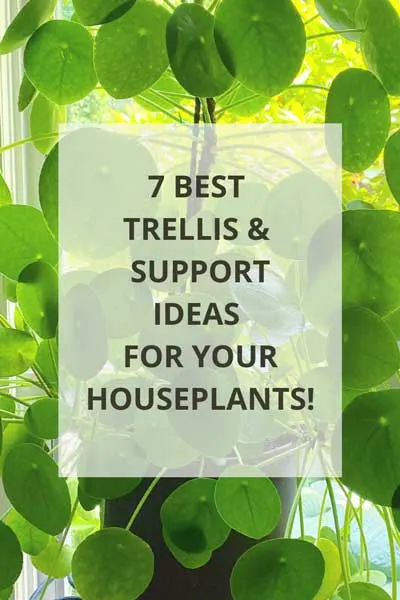
Table of Contents
7 Plant Support and Trellis Ideas for Your Houseplants
Each of these 7 solutions that I’m presenting will solve a unique problem or issue. I’ll go through when and why to use the various supports, and give examples of plants you could use them with.
- Moss Post
- Wood Plank
- Bamboo Teepee
- U-Shaped Plant Support
- Plant Trellis
- Single, Small Stake for Smaller Plants
- Hardwood Stake for Heavy Plants
Let me show examples of all these houseplant supports, and then I’ll have a resource at the end showing you where you can get the various items!
1. MOSS POST
I don’t know why I waited as long as I have to start making my own moss posts, but now that I’ve started, I will never purchase a pre-made one again.
You may ask, is a moss post necessary? Well, no it’s not…but if you want a really beautiful specimen over time, it’s an amazing way to grow your vining houseplants!
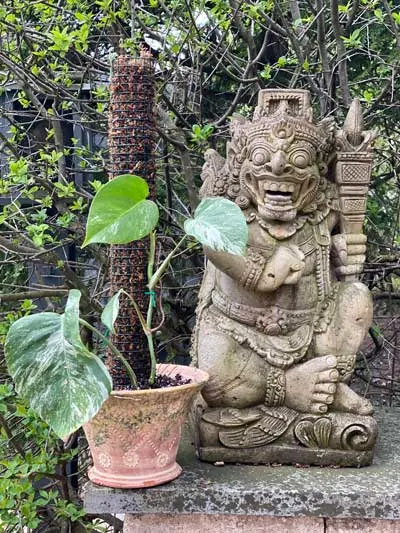
Many of the houseplants that we grow indoors are Aroids, and in nature, many Aroids are vining and will ramble on the forest floor until they find a support such as a tree.
The thing with vining Aroids is that once they attach onto a support, over time they will mature and the leaves will go through a big transformation.
Indoors, we’ll need patience, but as the vines grow, the leaves will get bigger and bigger, and over time many Aroid leaves will split and form what are called “pinnate” foliage, similar to how palm fronds grow.
Here is an example. Take a look at Epipremnum pinnatum ‘Cebu Blue‘ below. This is an example of what we’re used to seeing, and these are juvenile leaves.
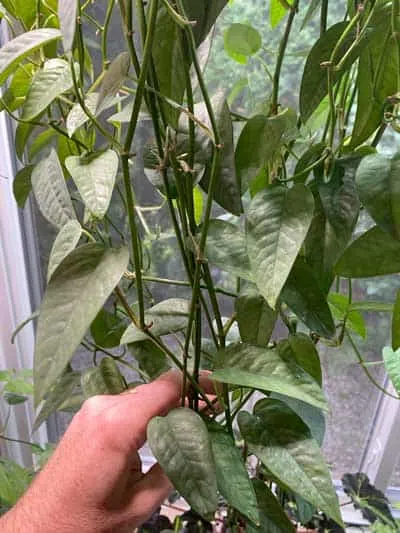
Now let’s take a look at the STARK contrast with adult leaves of Epipremnum pinnatum below!
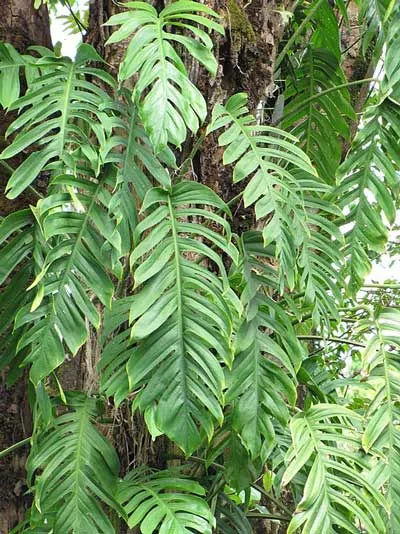
We are used to seeing juvenile leaves of many plants such as any one of a number of Pothos, Heart Leaf Philodendron, Scindapsus, various Monsteras including deliciosa, siltepecana, and adansonii, etc.
All of the ones I’ve mentioned above are typically sold as hanging baskets (except deliciosa).
You will always have juvenile leaves if you grow these plants in a hanging basket. The way to get huge leaves is to give them a support that they can attach onto such as a moss post or a wood slab or plank. With a lot of patience, over time you will see bigger and transformed leaf shapes!
Here is a 4 foot moss post I made for my variegated
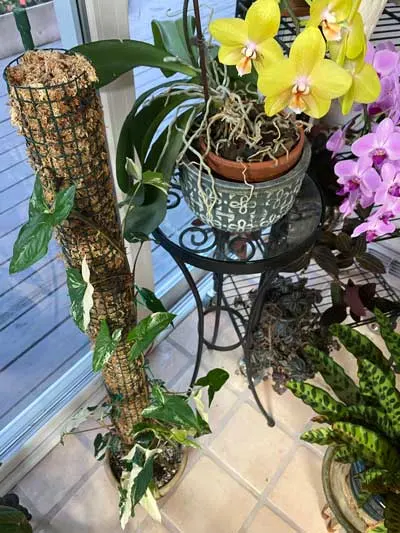
Once your plant reaches the top of the moss post, you can make cuttings off the tips of those vines and start those all over. Then plant those into another pot with its own moss post and keep it growing. That resulting plant’s leaves should be bigger than the last.
Keep repeating this and over time, with good growing conditions, you will have a mature plant with giant leaves and with slits in the leaves!
If you want to learn how to make your own moss post, check out my step-by-step instructional blog post on making your own moss post.
You will have to keep the moss post moist and water it regularly. Whenever my plants with moss posts need watering, I take them to the shower and thoroughly moisten the moss posts AND the soil at the same time.
Your plants will quickly grow roots into the moist moss.
Before we go on, here’s a look at the transformation of Pothos. Here are the juvenile leaves we are all used to seeing:
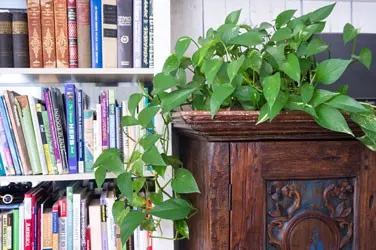
And here is a huge Pothos that I photographed in Mexico. Take a look at how large the leaves are and some of them have split as well. This is what happens over time when vines attach to a secure support.
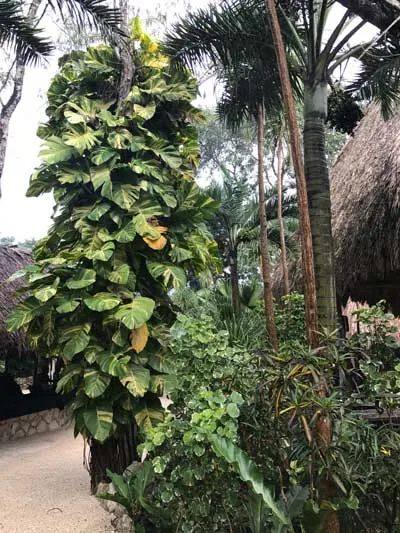
Why not experiment with making a moss post today and witness the transformation!
2. WOOD PLANK
If you don’t want to bother making moss post (which I still highly recommend that you make at least one), you can also use a plain, rough wooden plank.
Take a look at the the Monstera deliciosa below growing on a rough wood plank.
Just like the moss post, you would want to insert the wood plank at the time of repotting, so that you can easily place the rough wood plank at the bottom of the pot, and place your plant and soil in at the same time.
You will want to take your vines and tie them up securely against the wooden planks. Stretch tie tape plant ribbon works really well for this!
Over time, roots will grasp onto the wood plank and attach themselves. And over time, just how I described in the moss post section, your plants will mature and you will start to see the leaves get bigger and bigger.
3. BAMBOO TEEPEE
I don’t always want to bother with a moss post or wood slab, and sometimes I just want a nice stable support that I can simply tie the vines to.
All you have to do is insert 3 bamboo stakes, about equidistant from each other in a pot, and tie them on top.
Check out the teepee I made for my vanilla orchid below. I simply tied the vines with plastic coated wire twist I got from Amazon.
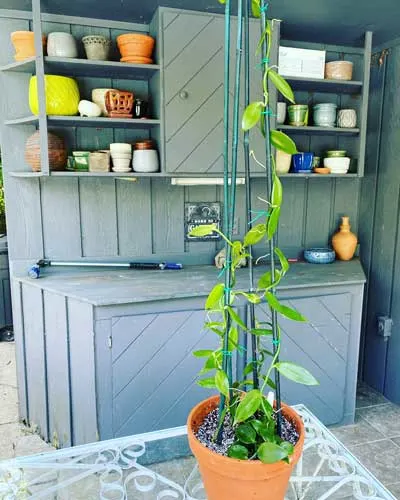
I also made a teepee for some Rhaphidophora tetrasperma cuttings that I potted up. I used 6 foot bamboo stakes
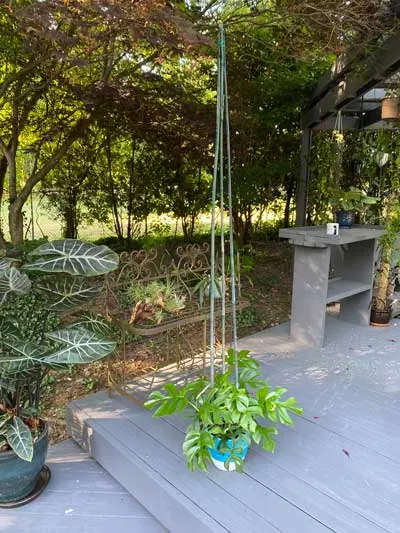
The plants were already in the pot. I simply inserted the bamboo stakes right into the soil and pushed them down to the bottom of the pot.
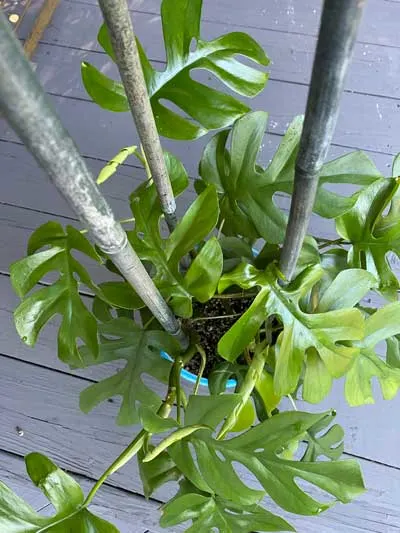
Then I used the plastic coated wire to securely wrap the top as shown below.
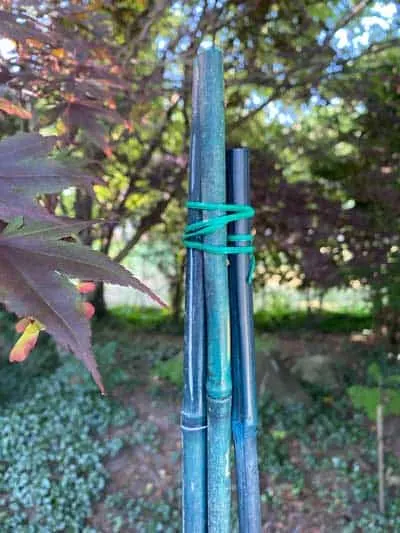
As the plant grows, I will secure it to the bamboo. Easy peasy!
I also made bamboo teepees for a Moonvine (the photo below on the left) and a cherry tomato (right), all of which I grew from seed. I love my teepees!
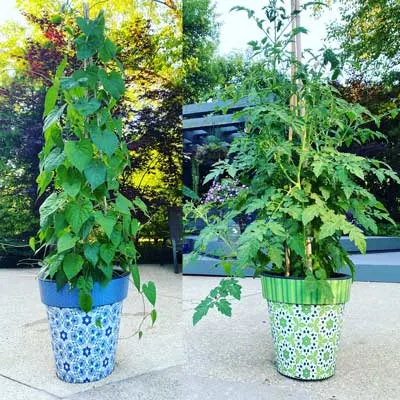
4. U-SHAPED PLANT SUPPORT
For any vining plants, U-shaped bamboo trellises are wonderful space savers and help give your plant some needed support!
Check out the Hoya kerrii in the photo below. You can easily train and tie your plant to the support.
Hoyas are great to use for these U-shaped supports, but you can use any vining plant!
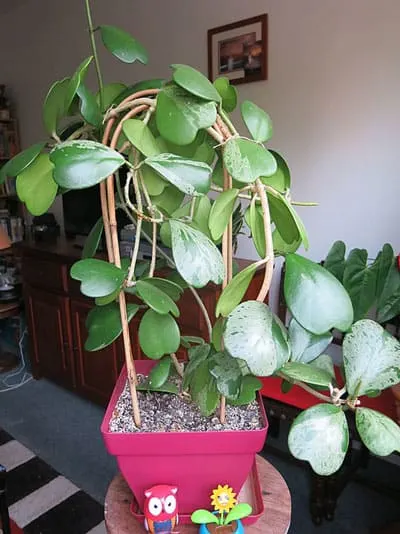
5. PLANT TRELLIS
Sometimes if you have a bushier houseplant, a trellis is a nice idea for support. I initially just had a wooden stake on my anthurium below, but then I added a wooden trellis and it has worked nicely!
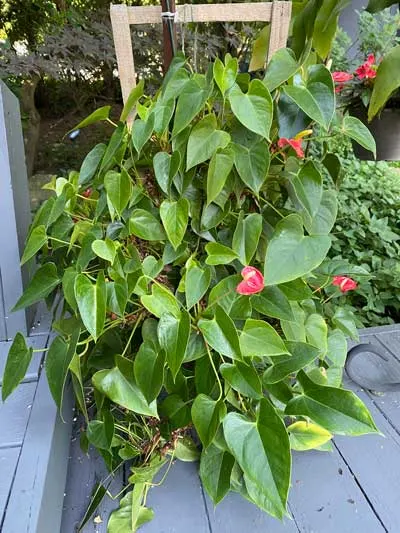
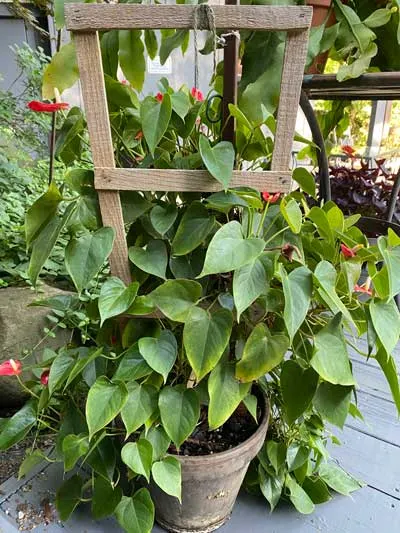
I’ve had this Anthurium for over 15 years and I had no idea it would grow this way, but this plant trellis has been perfect. I simply used twine to secure the plant to the trellis.
6. SINGLE, SMALL STAKE FOR SMALLER PLANTS
Sometimes all you need is a single, thin stake to do the trick. Check out my Pilea peperomioides below.
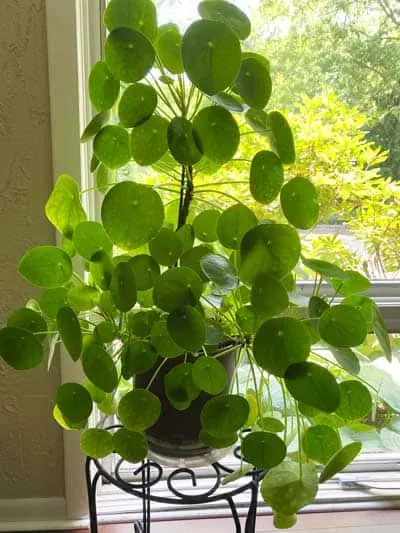
You can see just to the left of the center, tall stem, I inserted a thin plastic stake. You can also use a thin bamboo stake, but I had left over plastic stakes that I use for my Phalaenopsis orchids sometimes to support their flower stalks.
The center stem on my Pilea has grown tall and it was starting to lean over, so I simply inserted the thin stake right in the middle, all the way to the bottom of the pot, and securely tied the leaning part.
7. HARDWOOD STAKE FOR HEAVY PLANTS
If you need to fix a heavy, leaning houseplant, I like to use a hardwood stake for strength and stability.
I have an extremely large rubber plant and it slowly started leaning over little by little because it became very top-heavy.
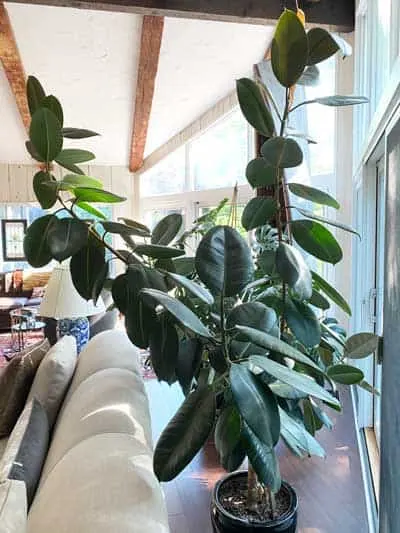
How did I stake it? I simply used a 3/4 inch square hardwood stake that I purchased at a hardware store or you can easily purchase on Amazon.
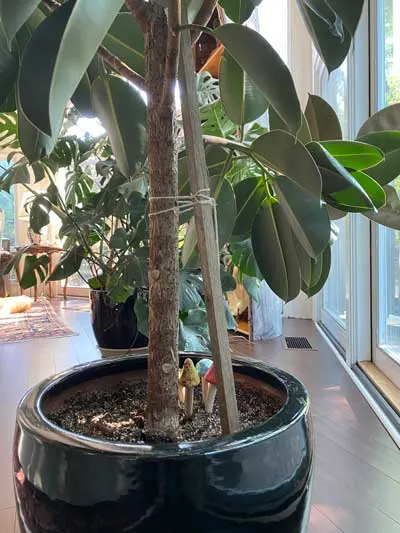
By the way, those mushrooms you see in the pot are ceramic and not real ones 🙂 If you do see real ones, learn all about this in my blog post on the common yellow houseplant mushroom.
This is how I staked the rubber plant. Look closely at the photo above. The trunk of the rubber plant was leaning to the left. I inserted the hardwood stake so that it was angled to the RIGHT a little bit.
The reason I did this is because when you use twine to tie the rubber plant trunk to the hardwood stake, it will pull on the stake and straighten it out a bit. If you were to insert the hardwood stake perfectly vertically, the weight of the plant will cause it to lean too far and your plant will not be straight.
Depending on your plant, you may need to play with the angle at which you insert the hardwood stake so that you have your plant supported the way you want.
Ties to Use to Secure your Plants Against Their Supports
There are various ties that you can use to to secure your plants against any of the 7 supports above. Everyone has their favorite ways, and here are 3 of my favorites!
GREEN GARDEN TAPE
This stuff is amazing! Simply cut a piece of the Stretch Tie Tape Plant Ribbon, and tie your plants to whatever support you’re using.
The benefit to using this is that the green ribbon stretches as the plant grows. It is also very flexible and strong!
PLASTIC COATED WIRE TWIST
I love this stuff and use it often, particularly with my moss post. I use it to secure vines right up against the moss post so that the roots can grow into the moss.
The plastic coated wire twist comes with a built-in cutter so that you can easily make the ties as long as you want.
HEMP CORD
I always have some kind of twine on hand, such as 100% Natural Hemp Cord.
If you prefer good old-fashioned twine, this is a great choice. You can even use it to make macrame plant hangers. I like to use twine to the tops of my bamboo teepees securely together.
Plant Supports
If you are looking for some great plant supports, I’ve included links below that you can browse on Amazon.
Hardwood stakes (for heavy plants)

I hope you’ve enjoyed this article. Do you have any other good ways to support your houseplants? Comment below. I’d love to hear!

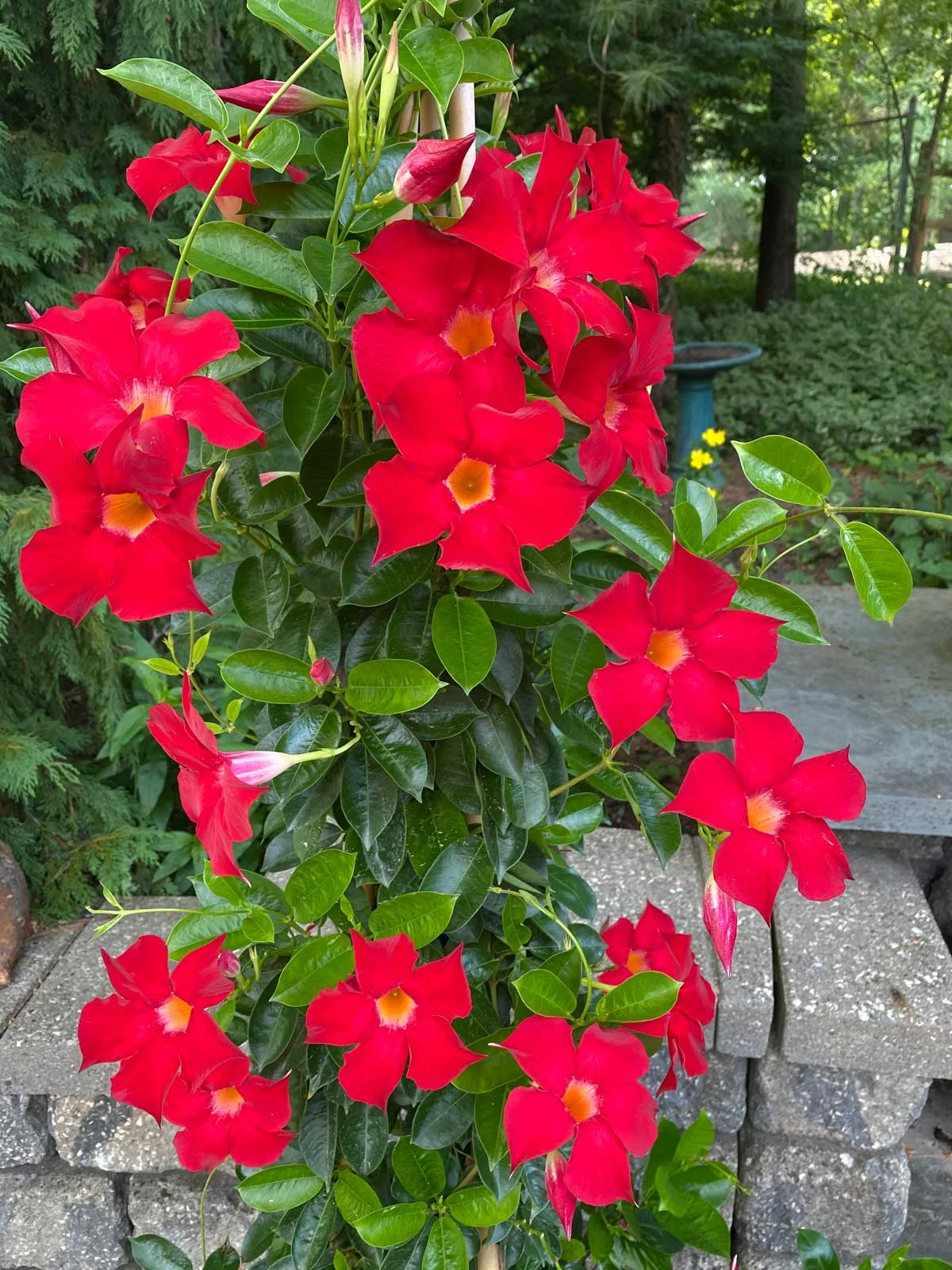
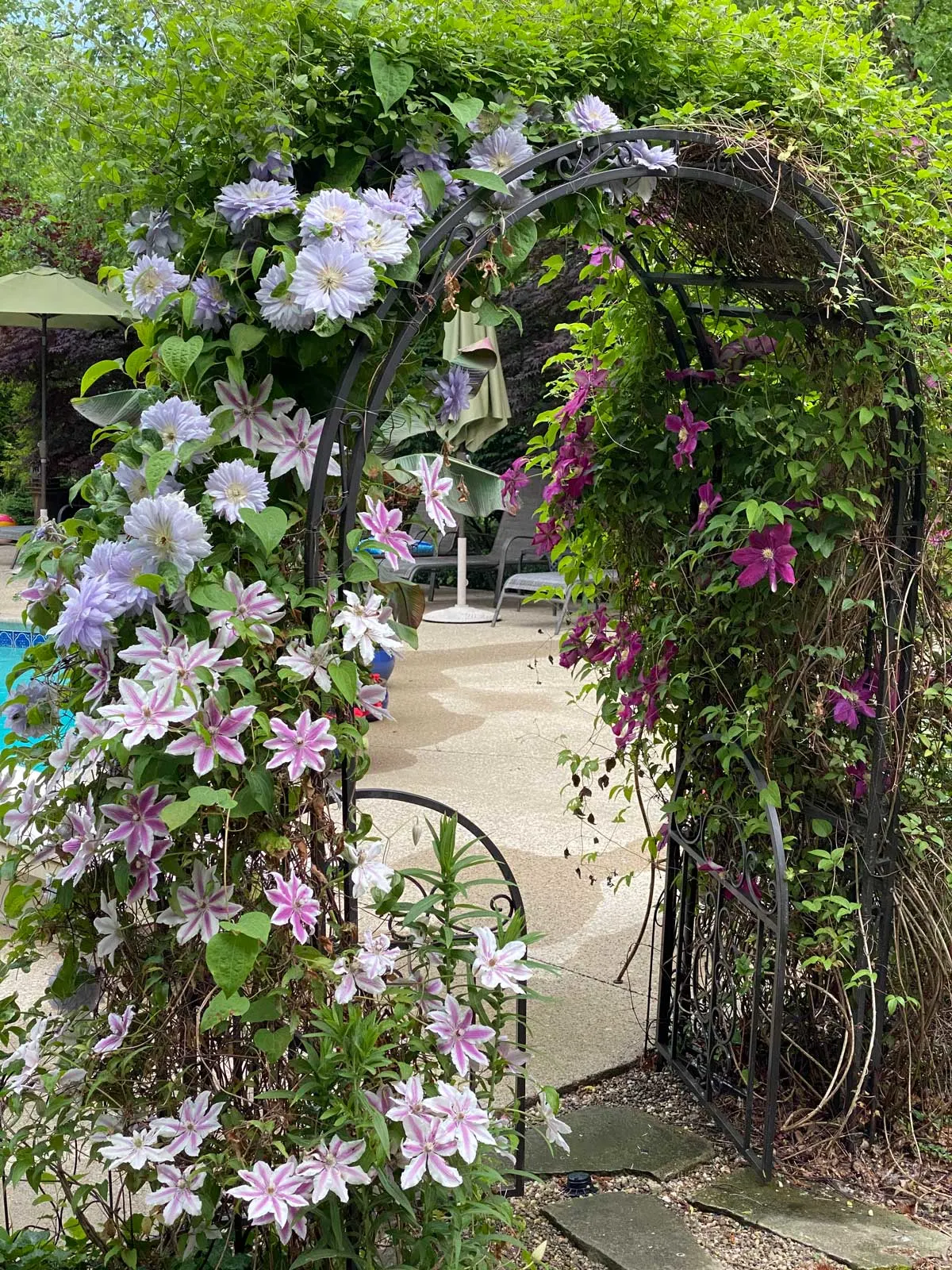
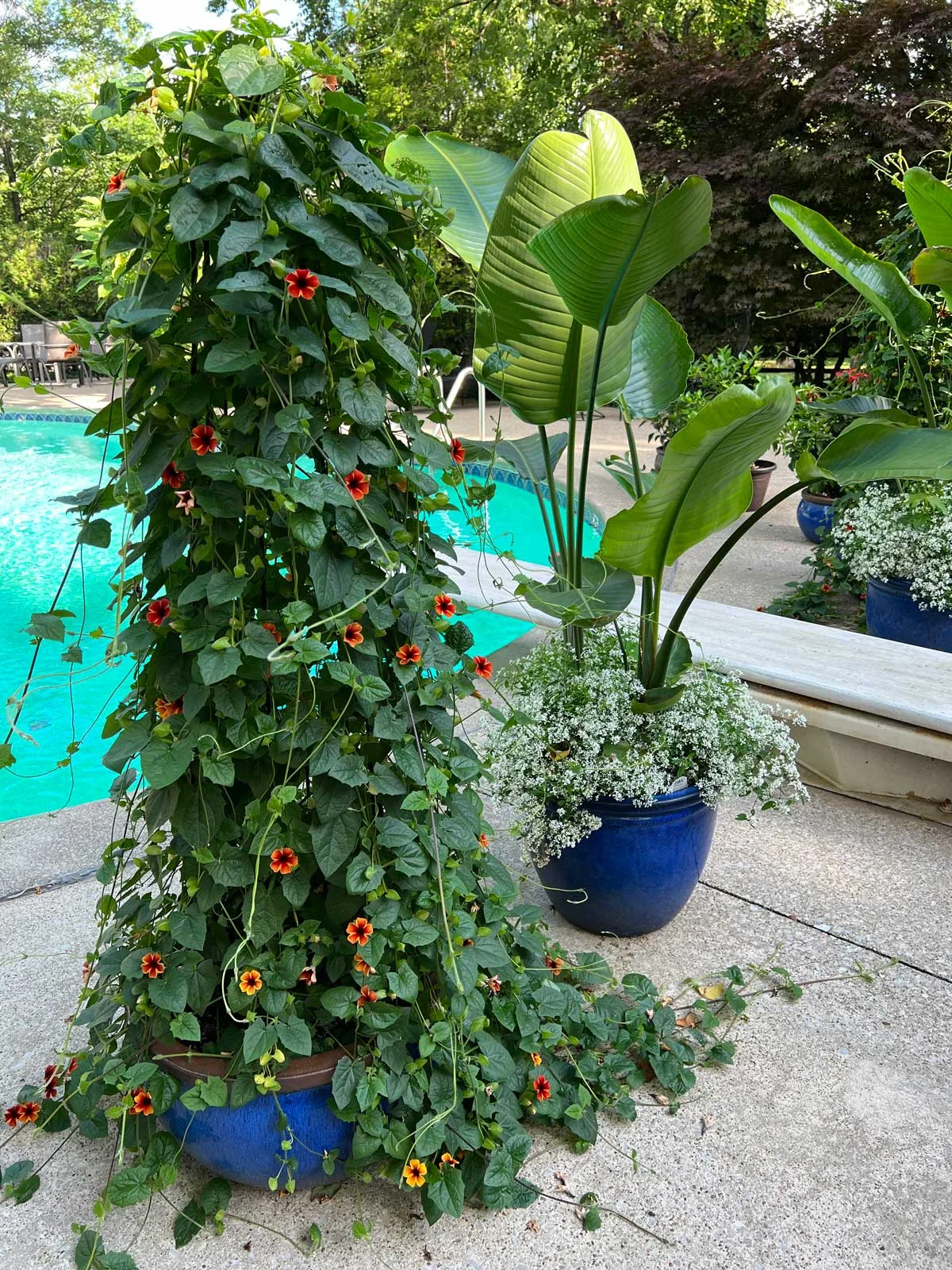
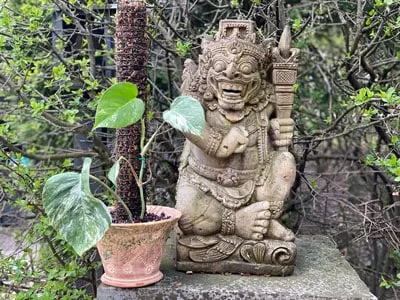
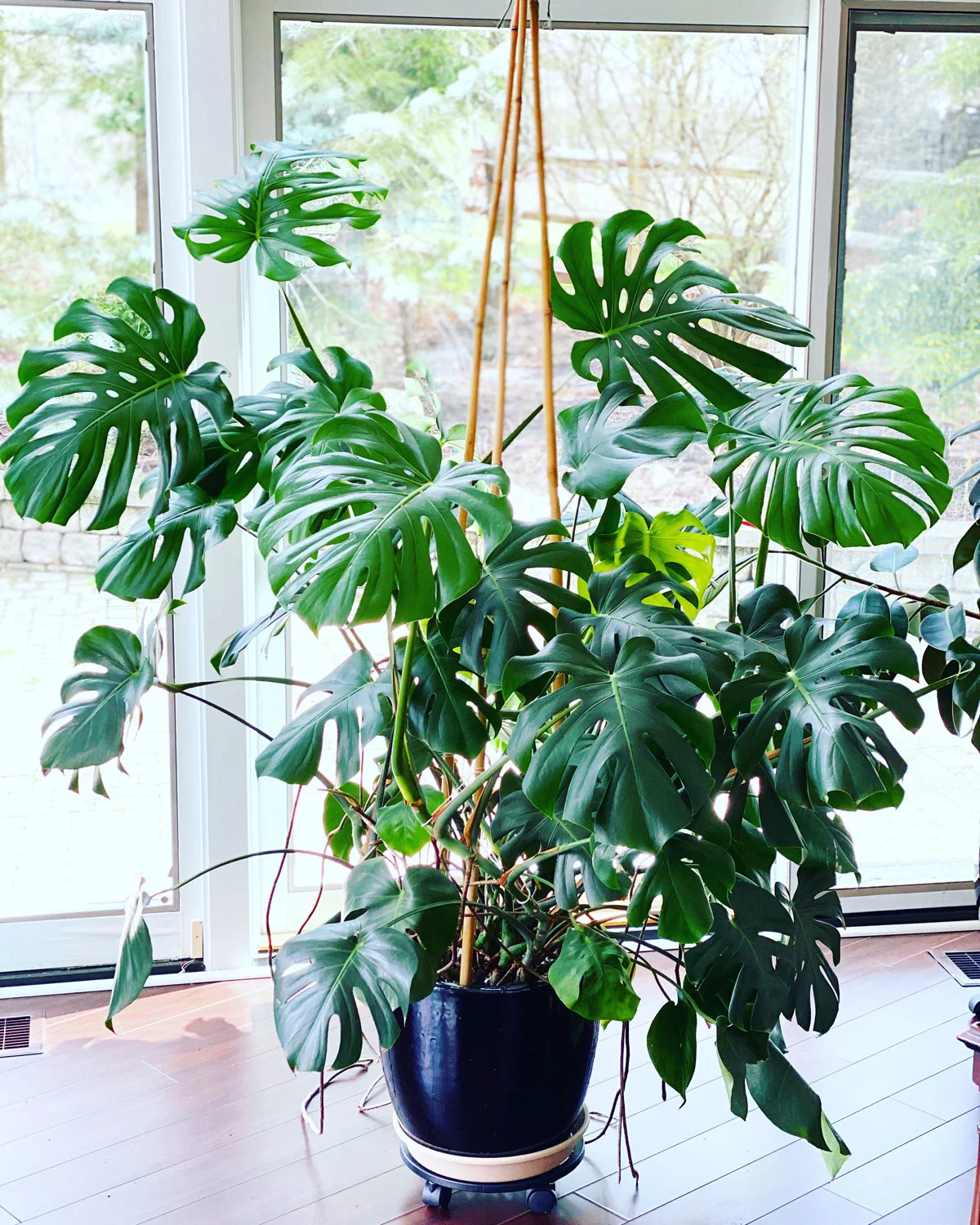
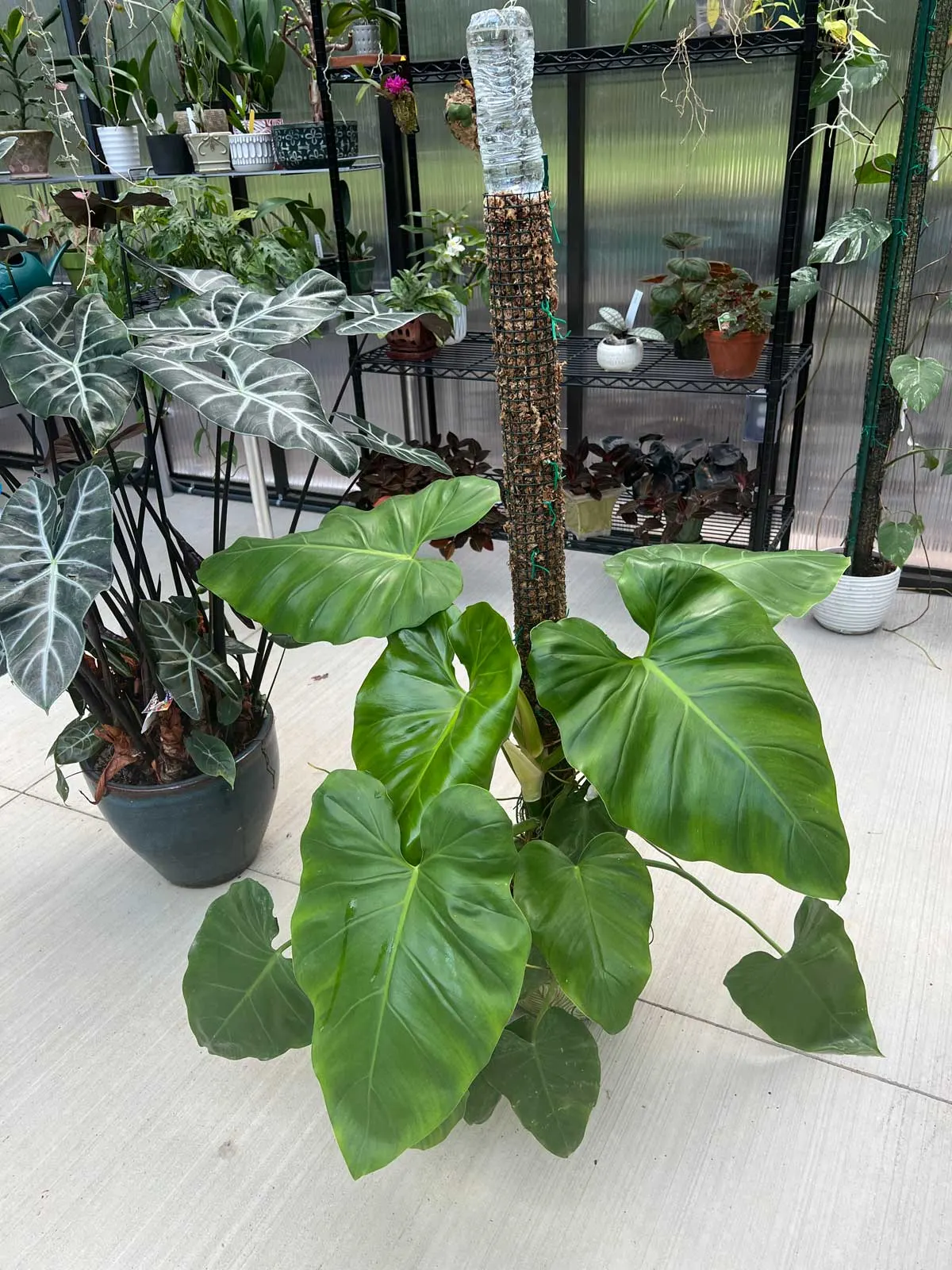
Kitty
Monday 30th of May 2022
Can wood dowels be used for a teepee instead of bamboo? I want to make one about 4 feet tall for a houseplant. I don't have access to bamboo stakes shopping locally, is there any functional reason they're preferred? Please don't suggest Amazon, I don't like to support that company. Thanks!
Raffaele
Tuesday 31st of May 2022
I don't see why you couldn't use wood dowels, but I suppose it depends on the type of wood they're made from. I'm not sure how long they'd last, but you can certainly try!
Elizabeth
Monday 15th of February 2021
Since I repotted my Monstera last summer, I don't want to repot it yet, However, it needs a stake. Would it grow up a bamboo teepee or are those too thin for a Monstera?
Raffaele
Monday 15th of February 2021
Hi Elizabeth, bamboo stakes comes in many different thicknesses so just choose sturdy ones. You'll have to train and tie them to the stakes. They won't automatically grow up them. Hope this helps!